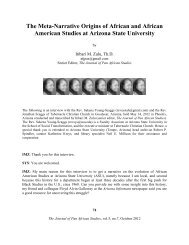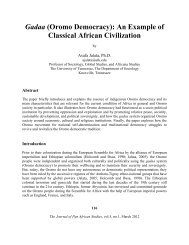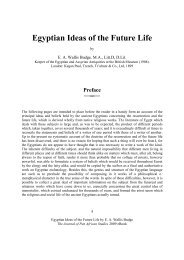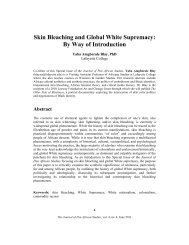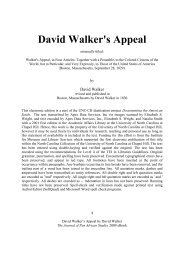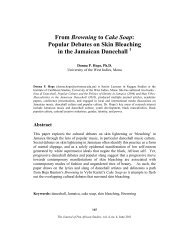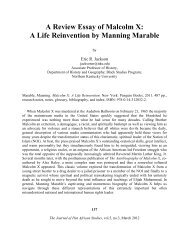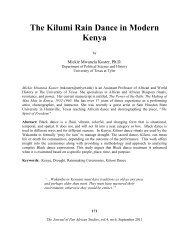The Adaptation of Swahili Loanwords From Arabic - Journal of Pan ...
The Adaptation of Swahili Loanwords From Arabic - Journal of Pan ...
The Adaptation of Swahili Loanwords From Arabic - Journal of Pan ...
Create successful ePaper yourself
Turn your PDF publications into a flip-book with our unique Google optimized e-Paper software.
(10) Link each V element to a syllable symbol<br />
σ σ σ<br />
│ │ │<br />
C V C C V C V<br />
│ │ │ │ │ │ │<br />
s u l t a n i<br />
(11) Link C-elements to the V on their right.<br />
σ σ σ<br />
│ │ │<br />
C V C C V C V<br />
│ │ │ │ │ │ │<br />
s u l t a n i<br />
(iv) Link C-elements to the V preceeding them so long as the resulting sequence is allowed in the<br />
language.<br />
σ σ σ<br />
│ │ │<br />
(a) C V C C V C V<br />
│ │ │ │ │ │ │<br />
s u l t a n i<br />
σ σ σ<br />
│ │ │<br />
(b) C V C C V C V<br />
│ │ │ │ │ │ │<br />
s u l t a n i<br />
In this example <strong>of</strong> the word sultani, we favour (a) against (b). Although (b) maintains the open<br />
syllable principle which is basic in Kiswahili, it violates the sonority principle in the second<br />
syllable; that is, the SON-SEQ constraint which requires complex onsets to rise in sonority and<br />
complex codas to fall in sonority. In (b), /l/ and /t/ are in onset position yet /l/ is more sonorous<br />
but is at the outer edge than /t/. This is illustrated in (12):<br />
53<br />
<strong>The</strong> <strong>Journal</strong> <strong>of</strong> <strong>Pan</strong> African Studies, vol.2, no.8, March 2009



